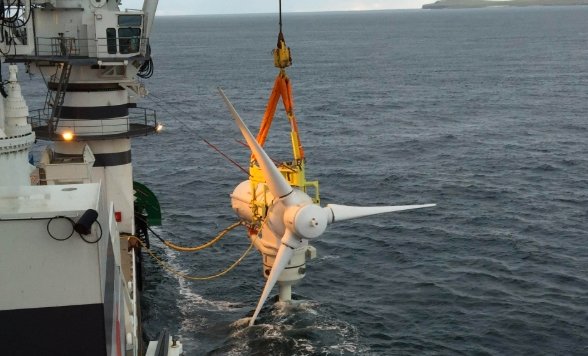Beneath the cold, restless waves off Scotland’s northern coast, a turbine has been whirring away for more than six years — and that’s got renewable energy watchers buzzing.
Submerged off the Pentland Firth’s rugged shoreline, the underwater turbine’s record run without major hiccups has breathed new life into the promise of tidal power — and thrown a spotlight on Scotland’s quiet but determined push to turn its churning seas into clean energy gold.
What Makes This So Impressive?
Let’s not sugarcoat it — the ocean is brutal. Salt, storms, constant currents. If your shiny new turbine can’t survive years down there without constant patch-ups, the whole idea becomes too pricey to keep afloat.
That’s why industry experts say the MeyGen turbine’s six-plus years of continuous spinning — without unplanned breakdowns — is a big deal. It shows that with smart design and solid kit, tidal turbines can keep going long enough to actually make money.
One-liner: It’s not just an experiment anymore — it’s proof.

MeyGen: Scotland’s Tidal Flagship
If you haven’t heard of MeyGen, you’re not alone. But in the world of tidal energy, it’s a name people drop a lot. Sitting in the Inner Sound of the Pentland Firth — that stretch of rough water between the mainland and Stroma Island — MeyGen is already one of the world’s largest tidal stream arrays.
Since switching on, its four turbines have been cranking out about 1.5 megawatts each. Together, they can power around 7,000 homes a year — a decent dent in Scotland’s ever-growing appetite for greener energy.
One line: Small numbers by national grid standards, but big ripples for the tech.
A Record Worth Shouting About
So what’s the secret? Swedish company SKF, which supplied the heavy-duty bearings and seals, says it’s all about relentless design tweaks and close monitoring. Those parts have lasted 6.5 years so far — no mid-sea rescue missions, no costly downtime.
Rémi Gruet of Ocean Energy Europe called it a “very significant milestone.” And no wonder — ocean energy can only work at scale if the hardware stays in the water, generating power, not back onshore in a warehouse getting fixed.
• Six years submerged with constant tidal currents
• No major maintenance shutdowns
• Investors more likely to back bigger farms
Gruet’s message is blunt: every extra year in the water means more cash saved, more clean energy generated — and more confidence from people with deep pockets.
How Big Could This Get?
Marine energy is still the underdog of the renewables world. Wind and solar hog the headlines. But according to the U.S. National Renewable Energy Lab, oceans hold the world’s largest untapped renewable resource — tides, waves, currents, even temperature shifts.
The numbers are mind-boggling. If we could capture all that swirling energy, it’d eclipse current global energy needs many times over. Of course, that’s the dream. In reality, it’s still early days.
One short note: Even now, most pilot projects are small, single-digit megawatt setups.
What’s Next for Tidal in Scotland?
Scotland’s location is its secret weapon — long jagged coastlines, wild seas, and narrow channels like the Pentland Firth where tides rush in and out like clockwork. This natural predictability is tidal’s ace up its sleeve: unlike wind or solar, you can see the tides coming years in advance.
But challenges remain. Building, installing, and maintaining giant underwater turbines isn’t cheap. And the infrastructure to connect remote coastal projects to the grid needs major investment.
Still, with MeyGen’s durability now proven, pressure is building for expansion. More turbines, bigger arrays, more local jobs. And maybe a chance for Scotland to lead Europe in a renewable niche that no one’s fully cracked yet.
| Project | Location | Capacity | Years in Operation |
|---|---|---|---|
| MeyGen | Pentland Firth | 6 MW (4 turbines) | 6+ years |
| Orbital O2 | Orkney | 2 MW (single turbine) | Since 2021 |
| Nova Innovation | Shetland | 0.3 MW | Since 2016 |
Durability isn’t just an engineering flex — it’s an investor magnet. Big money won’t back tidal energy if every turbine needs to be yanked out every few years. But a machine that keeps spinning in harsh seas for over half a decade? Now you’ve got a selling point.
Expect to see more private investment, new companies jumping in, and even governments sweetening the deal with green incentives.
One-liner: This milestone might just be the push tidal energy needs to become more than a footnote.


















